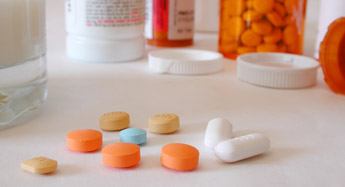Adaptive licensing: a model approach?
Alternative approaches to the authorisation of medicines have been the subject of debate in Europe in the past few years. Earlier this year the European Medicines Agency (EMA) launched its adaptive licensing pilot scheme, which aims to allow patients to access new medicines more quickly. Industry groups have welcomed the pilot, with 85 people from industry, patient groups and regulatory authorities assembling at Taylor Wessing's London office on 2 June 2014 to learn more about the pilot scheme. The event was hosted by the Association of the British Pharmaceutical Industry (ABPI), the BioIndustry Association (BIA) and the Centre for the Advancement of Sustainable Medical Innovation (CASMI).
The event was an opportunity to hear directly from Dr Hans-Georg Eichler, Senior Medical Officer of the EMA, about the aims of the pilot scheme and how companies can get involved. On 6 June 2014, the EMA reported that it had received twenty applications for the pilot scheme and had already selected two medicines to participate in the pilot. However, the EMA continues to welcome submissions from interested companies.
What is adaptive licensing?
 Adaptive licensing describes the progressive or staggered approval of a medicine based on a prospectively-planned process. This iterative approach enables a medicine to be authorised for use in a restricted patient population, following which the authorisation may be extended to a broader patient population (e.g. by labelling adaptation) after the collection of additional clinical evidence. The approach allows access to medicines earlier in areas of unmet medical need, while still protecting the more general public from risks associated with the product until further data can be assembled. The staggered approval also allows for a more educated value assessment by reimbursement authorities before a product is made available to a larger patient population.
Adaptive licensing describes the progressive or staggered approval of a medicine based on a prospectively-planned process. This iterative approach enables a medicine to be authorised for use in a restricted patient population, following which the authorisation may be extended to a broader patient population (e.g. by labelling adaptation) after the collection of additional clinical evidence. The approach allows access to medicines earlier in areas of unmet medical need, while still protecting the more general public from risks associated with the product until further data can be assembled. The staggered approval also allows for a more educated value assessment by reimbursement authorities before a product is made available to a larger patient population.
Dr Eichler described the traditional drug approval process as characterised by two defined periods (pre-authorisation and post-authorisation) separated by the "magic moment" of marketing approval. In an adaptive licensing approach, there is a series of approvals as evidence is gathered about the drug and its efficacy. Rather than holding back a product until it can be shown to be safe in a broad population, adaptive licensing starts with an initial limited approval at an earlier stage which can be expanded over time.
The principle of adaptive licensing has already been implemented in part in the authorisation of medicines. For example, the system has introduced a compassionate use exception and offers conditional marketing authorisations, both which take a more risk-based approach when determining if a patient population can obtain earlier access to a medicine. A more formal approach to adaptive licensing would be a further evolution of the system which offers greater flexibility and addresses some of the current criticisms of the time and investment required to bring a product to market.
The pilot project
As noted above, the EMA has invited companies to submit products to be included in the pilot. Products in phase 1 or 2 trials, prior to confirmatory trials will be the most suitable, although the EMA may consider still consider candidates outside this range.
According to the EMA, the criteria being used to select promising candidates for the pilot project include:
- unmet medical need of patients likely to be addressed by the medicine;
- early stage of clinical development to enable actionable input from relevant stakeholders;
- positive prospects that regulatory requirements for expansion from a restricted indication to broader populations can be fulfilled (in terms of population or use);
- potential for use of real-world data to substitute or supplement data from randomised clinical trials in fulfilling requirements for the expansion (see EMA article, "Adaptive Licensing").
 After a candidate is selected for the pilot, the EMA intends to conduct confidential "safe harbour" discussions with a range of stakeholders, such as patient representatives, regulators and health-technology-assessment bodies (responsible for national recommendations on product reimbursement). These discussions are intended to give an opportunity to explore options for development of the product without commitment of the drug developer or the EMA. Following such discussions the company may progress to obtaining a formal regulatory scientific opinion and/or making a marketing authorisation application. From the initial marketing authorisation, the parties will need to consider and develop the monitoring procedures in place to observe the efficacy of the product and if relevant, provide support for the authorisation of the product for use in additional patient populations. The traditional approach is heavily reliant on double-blind randomised control trials as the "gold standard" of data required to support a marketing authorisation application. For an adaptive licensing approach to be implemented, stakeholders will need to explore alternatives or complementary forms of clinical trials or data collection which may generate sufficient evidence taking into account the scope of the approval being sought.
After a candidate is selected for the pilot, the EMA intends to conduct confidential "safe harbour" discussions with a range of stakeholders, such as patient representatives, regulators and health-technology-assessment bodies (responsible for national recommendations on product reimbursement). These discussions are intended to give an opportunity to explore options for development of the product without commitment of the drug developer or the EMA. Following such discussions the company may progress to obtaining a formal regulatory scientific opinion and/or making a marketing authorisation application. From the initial marketing authorisation, the parties will need to consider and develop the monitoring procedures in place to observe the efficacy of the product and if relevant, provide support for the authorisation of the product for use in additional patient populations. The traditional approach is heavily reliant on double-blind randomised control trials as the "gold standard" of data required to support a marketing authorisation application. For an adaptive licensing approach to be implemented, stakeholders will need to explore alternatives or complementary forms of clinical trials or data collection which may generate sufficient evidence taking into account the scope of the approval being sought.
Legal and policy issues
The safe harbour framework set out in the pilot project fosters a collaborative environment, but there are several legal and policy issues which are yet to be resolved if adaptive licensing is to be adopted more widely. For example, the current system of data exclusivity in Europe runs from the date of the first marketing authorisation of a product. Under a system of staggered approvals, data exclusivity will expire earlier than if the product was authorised under the "traditional" approval process. Supplementary protection certificates (SPCs) are also dependent upon the date of the first marketing authorisation. It will be necessary to ensure that the incentives which have been developed over time to reward research and development are modified where necessary to take into account a system of staggered approvals.
On a practical level, there are concerns that adaptive licensing could lead to greater "off label" use of a product during its initial authorisation period. Adaptive licensing relies on strict prescribing practice to ensure patients are not put at risk. This will require the support of patients, doctors and national health systems.
A more flexible approach with earlier approvals also means the possible withdrawal of products where benefits are not shown for particular patient populations or indications. The criteria for withdrawal and how it would be implemented needs to be considered.
The MHRA's Early Access Scheme
 UK readers may also be familiar with the MHRA's Early Access to Medicines Scheme (EAMS) launched in April 2014. EAMS focuses on access to medicines prior to marketing approval in areas of unmet medical need, whereas adaptive licensing aims to bring forward the marketing approval of a medicine for particular uses. In this way EAMS is complementary to adaptive licensing and products may be candidates for both schemes.
UK readers may also be familiar with the MHRA's Early Access to Medicines Scheme (EAMS) launched in April 2014. EAMS focuses on access to medicines prior to marketing approval in areas of unmet medical need, whereas adaptive licensing aims to bring forward the marketing approval of a medicine for particular uses. In this way EAMS is complementary to adaptive licensing and products may be candidates for both schemes.
Both the EMA adaptive licensing pilot and EAMS offer an opportunity to challenge the way in which new medicines are evaluated and authorised. Various stakeholders, including the UK government, have in the last few years supported the need for greater flexibility in the approval process. The commencement of the adaptive licensing pilot, and early recruitment of its first participants, represents a positive step and industry will eagerly await the results.
If you have any questions on this article or would like to propose a subject to be addressed by Synapse please contact us.


Amanda Ebbutt
Amanda is a senior associate in the Intellectual Property department of our London office.
"The adaptive licensing pilot and the Early Access to Medicines Scheme offer an opportunity to challenge the way in which new medicines are evaluated and authorised."

